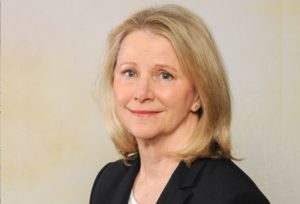
Your latest research program at the Sloan Foundation is in the Chemistry of Indoor Environments (CIE). What inspired you to create this program?
As a chemist, from my very first days at Sloan, I wanted to have a research program in chemistry. I looked at lots of potential opportunities, and needed to find something where 5-10 years of research with $20-50 million in support could be transformational. The CIE program emerged from the Microbiology of the Built Environment program. In 2012, Mark Cardillo, the executive director of the Dreyfus Foundation, encouraged me to consider environmental chemistry. In October 2012, I hosted a very important Sloan dinner at the AAAR meeting to explore the topic of indoor chemistry. Participants included Mark Cardillo, Charlie Weschler, Bill Nazaroff, Barb Turpin, Allen Goldstein, Paul Ziemann, and John Seinfeld. The group encouraged me and Sloan to pursue a research program.
How did you become a program director? What advice would you have for graduate students interested in working with non-profits or going into non-academic career tracks?
There are three constant themes in my life:
1. Life is a job interview.
2. I can never know too many people.
3. Be open to new ideas.
I first visited Sloan as a supporter of a team that had applied for funding. They got funded. Much to my surprise, the Sloan host called me and asked if I was interested in becoming a program director…Three months later I was a program director.
There are many exciting places to work that are outside of academia. Early in my career, I directed the development of diagnostics at a biotech company. I really enjoyed working at a company. I also did technology licensing, that is acquiring technology for the company. Later I did technology transfer for an academic institution, which is the other side of licensing. I did not like tech transfer as much as licensing because often the faculty over-valued their inventions, and technology transfer at most academic institutions is not central to the mission.
You have been a program director at the Alfred P. Sloan Foundation since 2000. What has been the most rewarding aspect of your work there?
It’s hard to choose. It’s rewarding to see early career faculty develop into tenured faculty. It’s exciting to create networks of people who never knew they wanted to work together. Perhaps the most exciting part is seeing the research across the program come together and tell a bigger story.
Have there been any challenging aspects of your work as a program director?
Yes. Sloan is a small foundation with limited funding allocated across a range of programs–so it was challenging to work with less than the requested budget. That said, despite budget limitations, the CIE grantees are doing creative and exciting multidisciplinary research to elucidate indoor chemistry.
Your team-building efforts for the Microbiology of the Built Environment and Chemistry of the Indoor Environments involved many in-person scientific meetings and discussions over friendly meals. How have you adapted to the remote reality of the COVID-19 pandemic?
I really miss the in-person interactions, especially during meetings and workshops. Who knew that the last Sloan indoor chemistry dinner would take place in NYC in Feb 2019! I miss the informal interactions. That said, I started a new position during COVID, leading a multidisciplinary team that includes at least 3 people I have never met in person–and things are going well. My network continues to expand. That said, I prefer phone calls instead of one-on-one Zoom meetings.
You are starting a new position as a Contributing Scholar at Johns Hopkins University. Can you share what interested you in this position and what your goals are?
As a contributing scholar at the Johns Hopkins Center for Health Security, I get to take what I’ve learned in just about all my Sloan programs and apply the knowledge and network to developing pandemic policy for indoor air. The goal is to create policy that will reduce exposure to airborne disease indoors. Creating policy involves lots of different levers, funding, regulation, creation of standards, oversight, etc.
You are an outspoken advocate for diversity and women in science. Do you have any advice for students who are unsure about pursuing a career in academic research?
Pursue your dreams, work hard, and be open to new opportunities, as well as changes in plans.
Has leading the CIE and Indoor Microbiome programs changed the way you interact with buildings and your home? What changes have you made in your life as a result of science that you learned?
YES!!!! I have an in-home and a portable carbon dioxide meter as a proxy for measuring ventilation. I have several portable air cleaners and I just bought a particle counter. Improved ventilation and filtration can remove particles in the air, whether they contain virus or not, and provide healthier air.